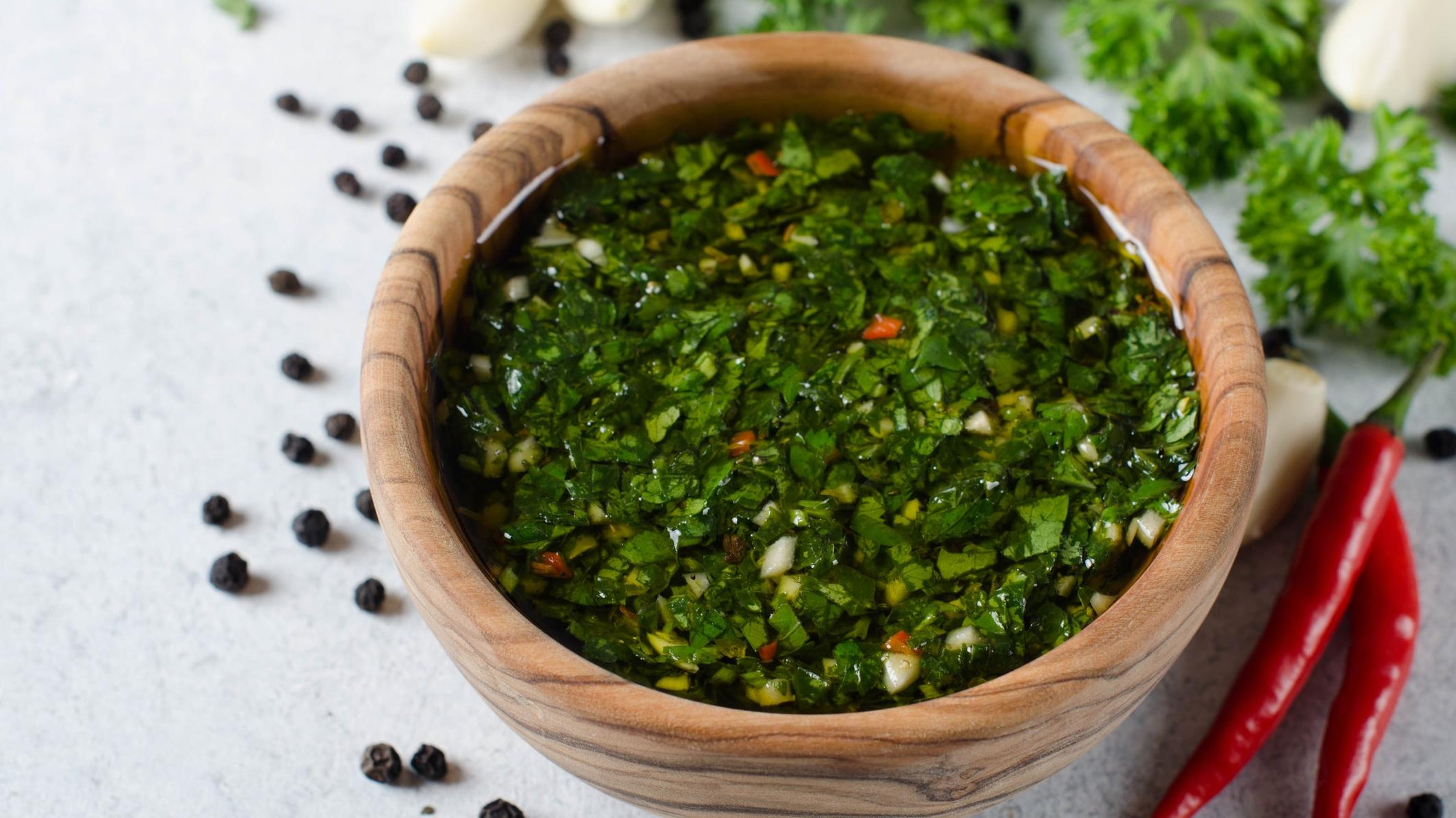Chimichurri Is The Only Sauce Worth Serving On Steak
This herby, piquant, spicy, salty sauce slices through the fattiness of cheaper cuts like a razor
Normally I don't believe steak should ever be served with sauce, because when I've got a fine slab of red meat in my hands, I don't want to taste anything but that. One of the only exceptions I will make is for chimichurri, which has the sort of magic that can turn a "lesser" steak like skirt, shoulder, or flank into something I'd gladly pay ribeye prices for.
Chimichurri contains a wide variety of flavors and, depending on who you ask, a wide variety of ingredients: floral richness from high quality olive oil; zing from some sort of acid, like vinegar or freshly squeezed citrus; bite from raw garlic or minced shallots; fire from dried pepper flakes or minced chilis; pungent salinity from anchovies, capers, or a hefty pinch of fancy salt. Though there's enough going on to make it sound like chimichurri is the antithesis of my "keep steak simple" beliefs, it is, in fact, the perfect companion to the meat. Once the flavors meld into a balanced whole, the sauce slices through the fattiness of cheaper cuts like a razor—fattiness that can linger on the tongue for too long, preventing you from tasting the full, beefy glory of the steak.
There is no "best" chimichurri sauce. Much like Mexican salsas, you can find different interpretations in different regions of South America, particularly in Argentina and Uraguay; it's thought to have been brought over from the Basque region of Spain by immigrants settling in Argentina in the 19th century. (The name chimichurri might derive from a phonetic spelling of the Basque word tximitxurri, which can be loosely translated to mean "a bunch of things mixed together in no particular order.") Chimichurri does not need to be an exact recipe—in fact, it's actually better when it's your recipe. Add a bit more of this or a bit less of that to make a chimichurri that pleases your palate, and use up whatever ingredients you have in your kitchen.
Traditionally, chimichurri is made by hand, not with a food processor. A food processor will create a sauce that's a bit more of a blended paste, while mixing by hand results in a luscious, oil-based condiment that drips off your food in rich, herbaceous slicks. It takes a bit more effort, but it's well worth it.
Chimichurri Sauce
- 1 small bunch flat leaf parsley
- 1 small bunch cilantro
- ¼ cup fresh oregano leaves
- 1 Tbsp. capers
- 1 small shallot, minced
- 4 large cloves of garlic, minced
- 1 small chili pepper, minced (optional)
- 2 Tbsp. sherry or red wine vinegar
- 2 Tbsp. lemon juice
- ⅔ cup flavorful olive oil
- Salt and pepper, to taste
Trim the bottoms off the parsley and cilantro. Use a chef's knife with a rocking motion to finely mince the herbs, stems and all. Add the oregano leaves and capers to the pile and mince into the rest of the herbs, then move them all to a mixing bowl.
Stir in shallot, garlic, chili (if using), vinegar, lemon juice, and olive oil. Add salt and pepper to taste, then allow to rest for at least 15 minutes, preferably longer. Taste again, and adjust with more salt/pepper/herbs/acid as you see fit. Chimichurri can be refrigerated in a glass jar or tightly sealed plastic container for up to three days.
